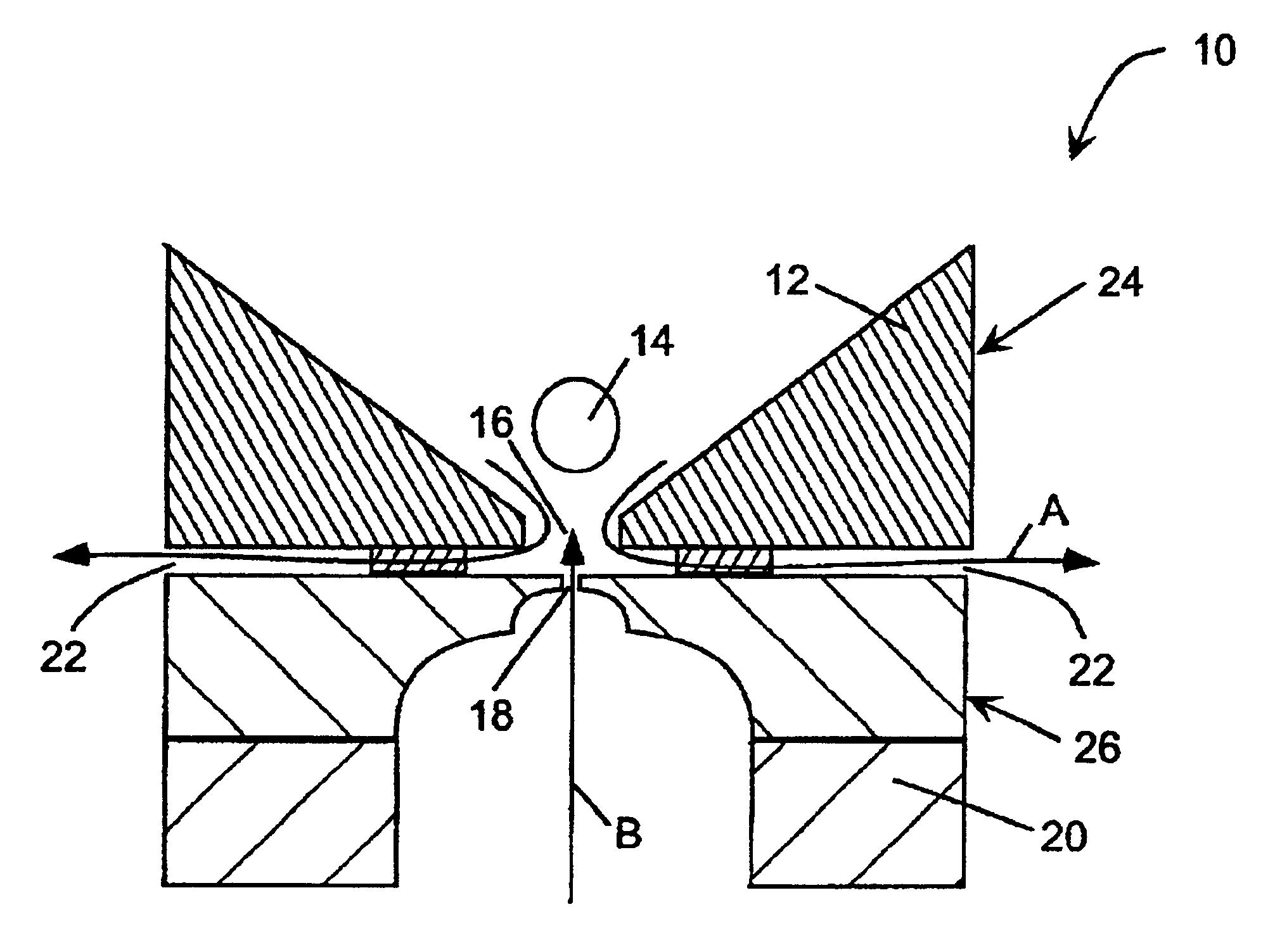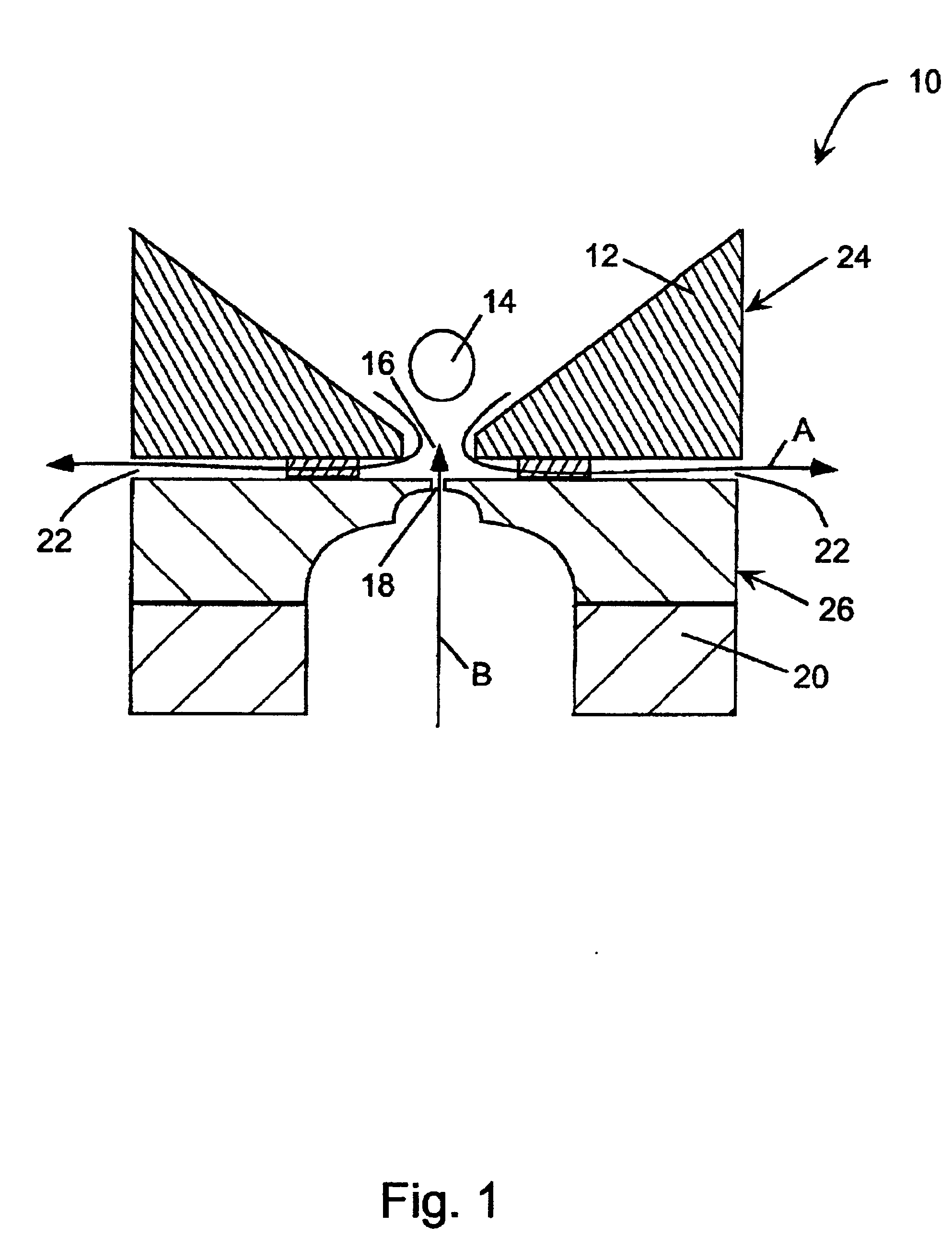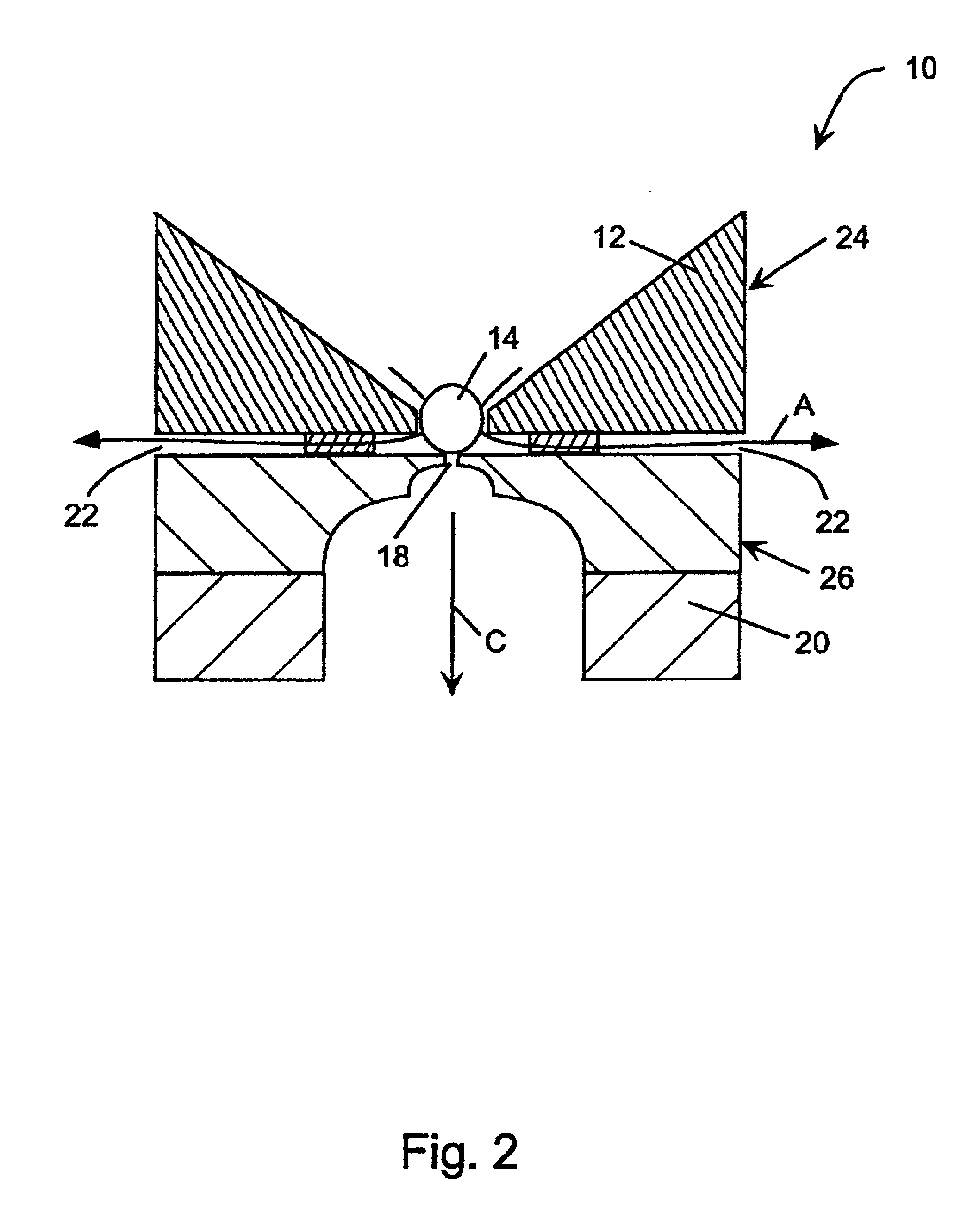Method of positioning cells for electrophysiological testing
- Summary
- Abstract
- Description
- Claims
- Application Information
AI Technical Summary
Benefits of technology
Problems solved by technology
Method used
Image
Examples
Embodiment Construction
A major aspect of this invention lies in the procedure used to draw a biological membrane toward an electrode aperture to form a seal in a perfusion chamber for electrophysiological recording. A pressure (positive or negative) is applied to the extracellular fluid in the extracellular compartment of the chamber to cause flow of the biological membrane being tested toward the electrode aperture. At the same time, sufficient positive pressure is applied to the intracellular fluid in the intracellular compartment to either cause flow of intracellular fluid into the extracellular compartment through the electrode aperture or at least prevent flow of extracellular fluid into the intracellular compartment. When the biological membrane approaches the electrode aperture in the extracellular compartment, suction is applied to the aperture from the intracellular compartment to draw the membrane in and form a seal. The initial countercurrent flows of fluids near the electrode aperture in the e...
PUM
| Property | Measurement | Unit |
|---|---|---|
| Pressure | aaaaa | aaaaa |
| Flow rate | aaaaa | aaaaa |
| Electrical resistance | aaaaa | aaaaa |
Abstract
Description
Claims
Application Information
 Login to View More
Login to View More - R&D
- Intellectual Property
- Life Sciences
- Materials
- Tech Scout
- Unparalleled Data Quality
- Higher Quality Content
- 60% Fewer Hallucinations
Browse by: Latest US Patents, China's latest patents, Technical Efficacy Thesaurus, Application Domain, Technology Topic, Popular Technical Reports.
© 2025 PatSnap. All rights reserved.Legal|Privacy policy|Modern Slavery Act Transparency Statement|Sitemap|About US| Contact US: help@patsnap.com



